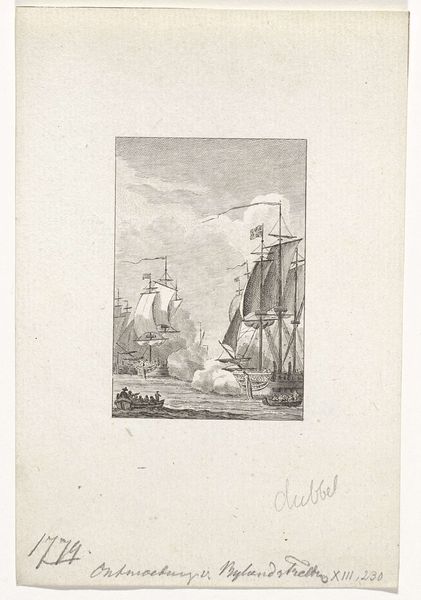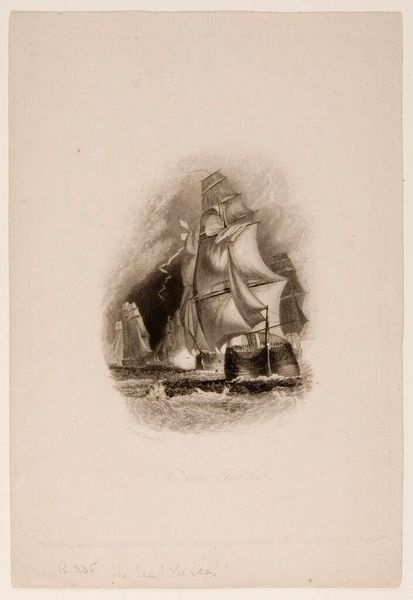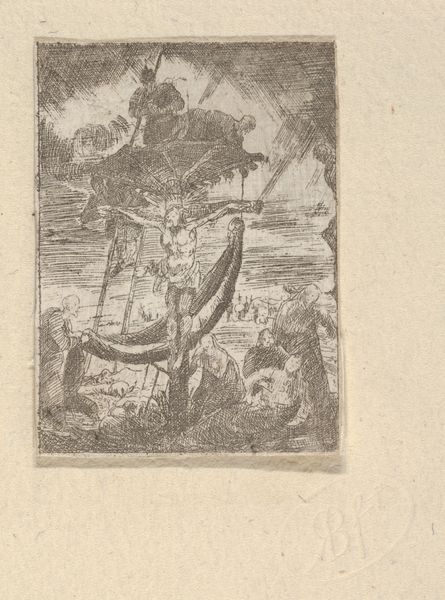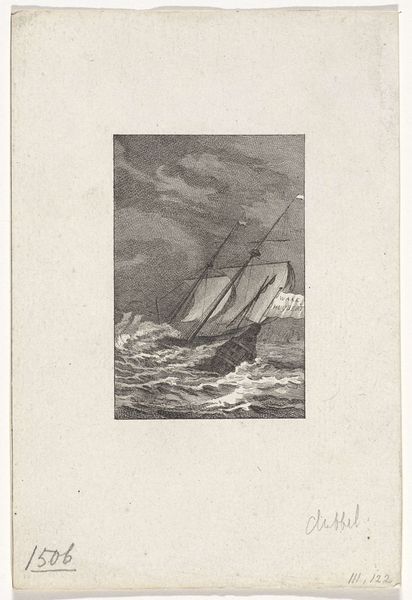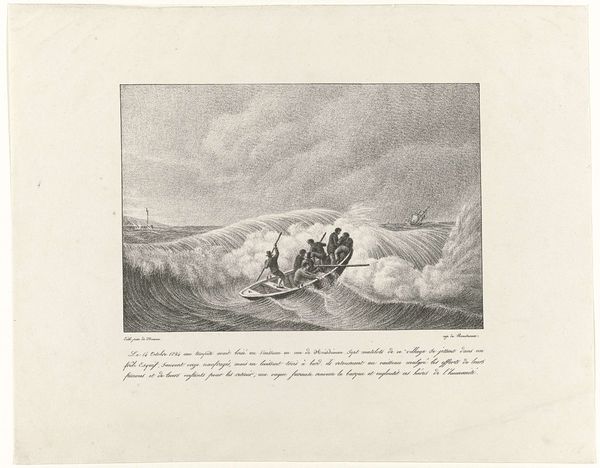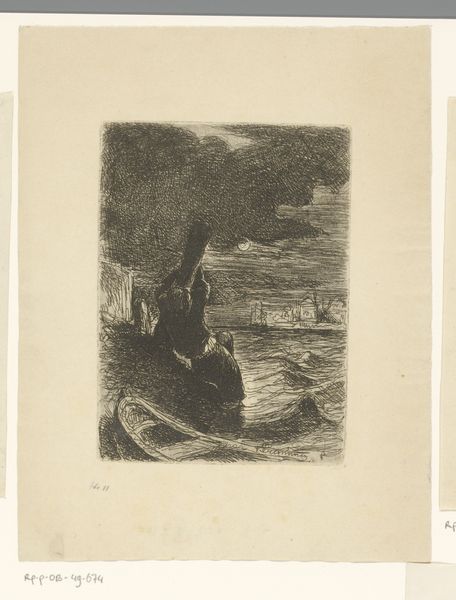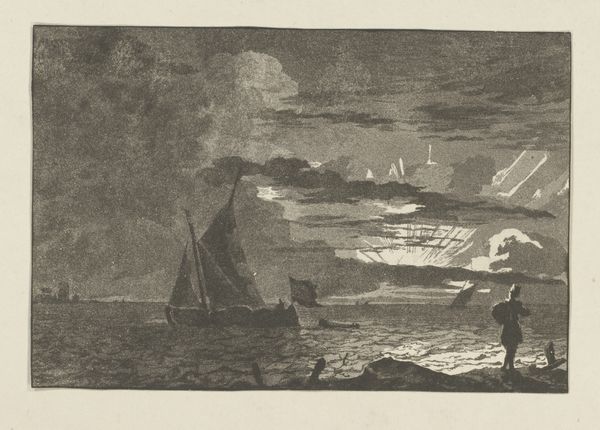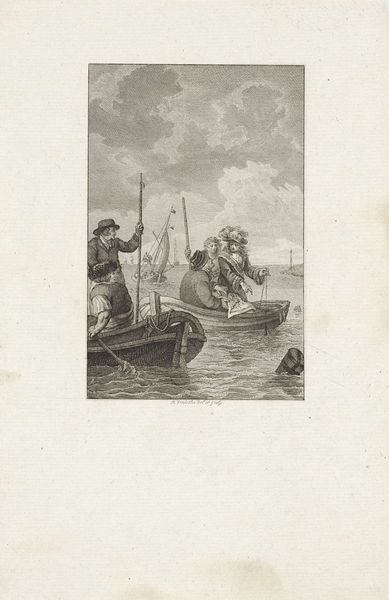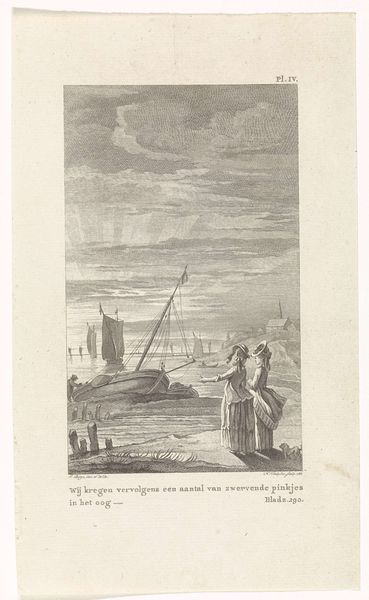
Dimensions: height 230 mm, width 155 mm
Copyright: Rijks Museum: Open Domain
Curator: Here we have Reinier Vinkeles’ 1791 engraving, “Jarry Sneuvelt in een Gevecht met de Engelsen, 1783," on display here at the Rijksmuseum. It's a remarkably detailed print illustrating a naval battle. Editor: The immediate feeling is chaos, yet meticulously rendered. The composition, despite its dynamism, is very classical—a studied approach to representing conflict. Curator: Indeed. Vinkeles was known for his skill in capturing historical scenes with precision, aligning with the Dutch Golden Age tradition and moving into a Baroque sensibility, despite it being a later rendition. The event itself, of course, relates to the Fourth Anglo-Dutch War. It shows Captain Jarry supposedly being struck down by the English. The drama is heightened with all the smoke from the cannons, obscuring a lot of detail in the background and the sky. Editor: Given the time gap between the event in 1783 and the print in 1791, what political messages were embedded in such recreations of conflict? Is there a nationalistic undertone, remembering conflicts while perhaps masking a sense of loss or even a call to prevent future conflicts through awareness of potential deadly impacts? Curator: It certainly touches on the cultural and national identity being forged in that era. Naval power was a core point of national pride, especially as sea routes were a core line in building economic expansion, so illustrating these naval events did serve a clear purpose in reinforcing Dutch maritime prestige. But also we have to note it was commissioned art, created under patronage and influenced by the desires of those with power. Editor: Which raises the question of perspective. Who is centered in this narrative, and whose perspectives are minimized? It feels like those actually caught in the fighting and struggles on those ships are reduced to props within the staging of geopolitical struggles and, indeed, power struggles. The individual is removed in favor of the grander scale of combat, as one man’s sacrifice plays into wider imperial power. Curator: I see your point. There is certainly a privileging of a broader narrative over individual stories. But also it’s a valuable illustration for military historians! Editor: Of course. Art holds so many meanings and these prints serve so many different masters. Understanding its potential intentions provides further depth in understanding history, politics, and societal tensions. Curator: Ultimately, these engravings act as historical documents shaped by specific social and political forces and provide an interesting angle in evaluating what Dutch identity and values meant during the Golden Age. Editor: Agreed, and the work serves to remind us that visual representations of conflict, however detailed, always present a curated perspective on events.
Comments
No comments
Be the first to comment and join the conversation on the ultimate creative platform.
